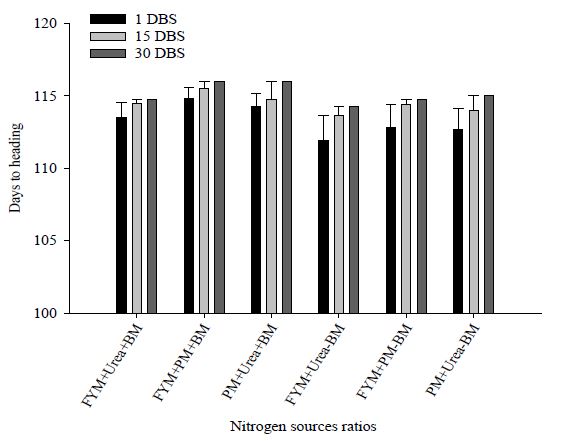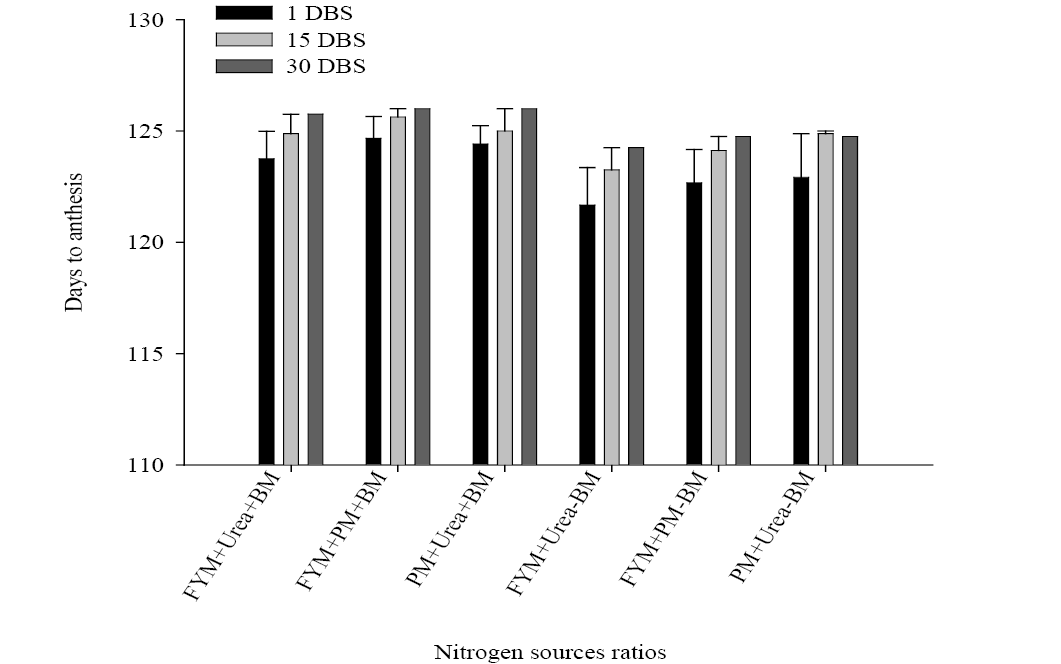Management of Nitrogen Sources with and without Beneficial Microbes and its Application Timing for Wheat Crop stand and Phenology Improvement
Management of Nitrogen Sources with and without Beneficial Microbes and its Application Timing for Wheat Crop stand and Phenology Improvement
Faiq Ahmad1, Shahen Shah1*, Muhammad Amin2, Ikram Ullah3, Sajid Ali4, Maaz Khan1, Muhammad Shakur5 and Sajjad Khan6
Interaction of nitrogen sources and application timing for days to heading of wheat. (DBS= days before sowing, BM= beneficial microbes. Each of the farmyard manure (FYM), poultry manure (PM) and urea were applied to provide 50% of 120 kg N ha-1.
Interaction of nitrogen sources and application timing for days to anthesis of wheat. (DBS= days before sowing, BM= beneficial microbes). Each of the farmyard manure (FYM), poultry manure (PM) and urea were applied to provide 50% of 120 kg N ha-1.









